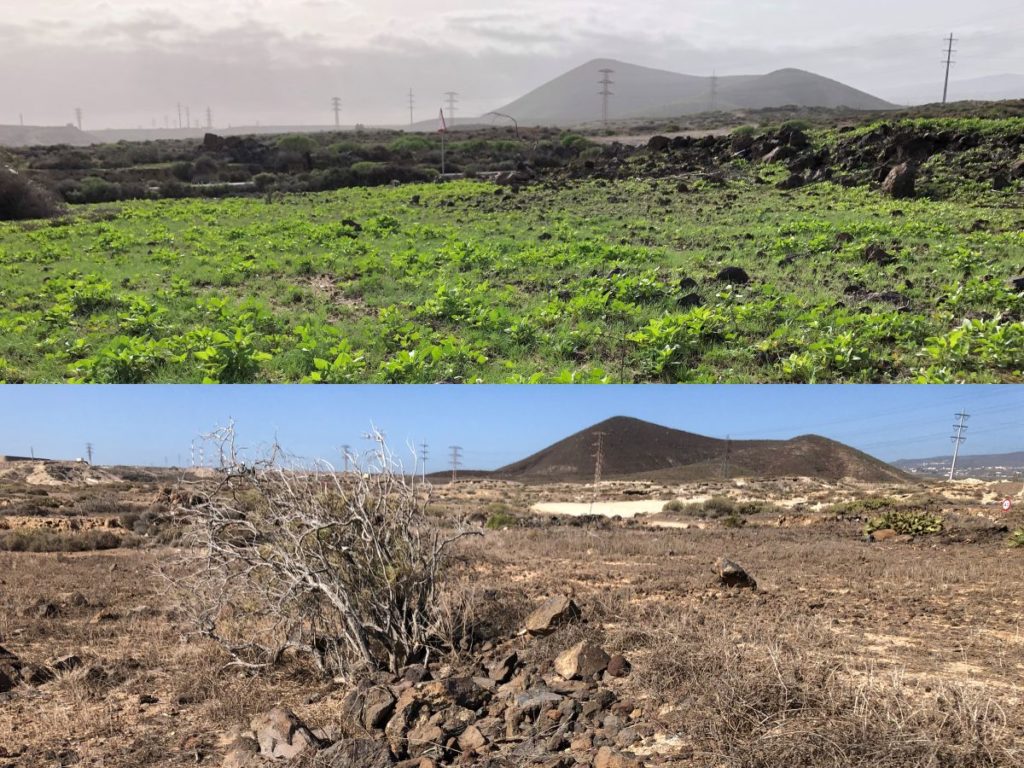The Canarian countryside is sounding all the alarms as the agricultural sector is grappling with suffocation due to bureaucracy, rising production costs, declining income, unfair competition, and the impacts of the 2030 Agenda. These challenges are putting island farmers and ranchers in a tight spot, prompting them to take to the streets to protest. Additionally, there’s another concerning issue arising – the disengagement of younger generations from these traditional activities, posing a threat to generational continuity.
Adding to these adversities, the drought has intensified, creating a troubling scenario that may force the Cabildo to consider declaring a water emergency for the Island next week.
The institution led by Rosa Dávila has called for a meeting with the Insular Water Council, the public company Balten, and departments related to the Primary Sector and Natural Environment, Sustainability, Security, and Emergencies to assess the situation and potentially declare a state of emergency that would impact the entire population, as stated by the island’s president. With reservoir levels below 40% in the middle of winter, which is insufficient for the agricultural sector to sustain operations with minimal guarantees during the upcoming summer.
“We are facing the longest continuous drought in history, and Tenerife is experiencing the most severe situation in the Canary Islands,” mentioned Lope Afonso, the Vice President of the Cabildo, who, together with the island’s Primary Sector councillor, Valentín González, has proposed a total of 14 measures to address the irrigation needs of the sector. These measures include infrastructure enhancements, immediate actions involving new desalination systems, the integration of reclaimed water, and improved efficiency in distribution networks, particularly in anticipation of a critical summer period.
The President of Asaga, Ángela Delgado, highlighted that the reduced rainfall has led to increased plant transpiration, resulting in higher water consumption. Delgado noted that pond levels are currently 30% lower compared to the previous year. Without rainfall soon, Delgado warned of a potential “catastrophic” situation for potatoes, leading to higher prices than the previous year.
In the midst of winter, the landscapes in the south of Tenerife paint a starkly different picture compared to just over a year ago when the subtropical storm Hermine in autumn painted the region lush green. For weeks, the area was covered in a blanket of vegetation from the mountains to the coast, a sight not seen in five years.
The cyclone, originating from Cape Verde and impacting the Canary Islands, brought abundant, gentle rainfall over three days, saturating the soil without causing damage and partially replenishing aquifers, reservoirs, and ponds – much to the delight of farmers gearing up for the potato planting season in the Canaries.
Hermine proved to be a blessing, miraculously transforming the Islands’ landscapes and especially the South, completely altering its appearance. Arid zones vanished; where dry roads once stood, verdant greenery took over. The current view contrasts starkly with what was witnessed just over a year ago, with dry, parched land, withering vegetation, and a plea from the fields for water.


















